Chadal in Tournée



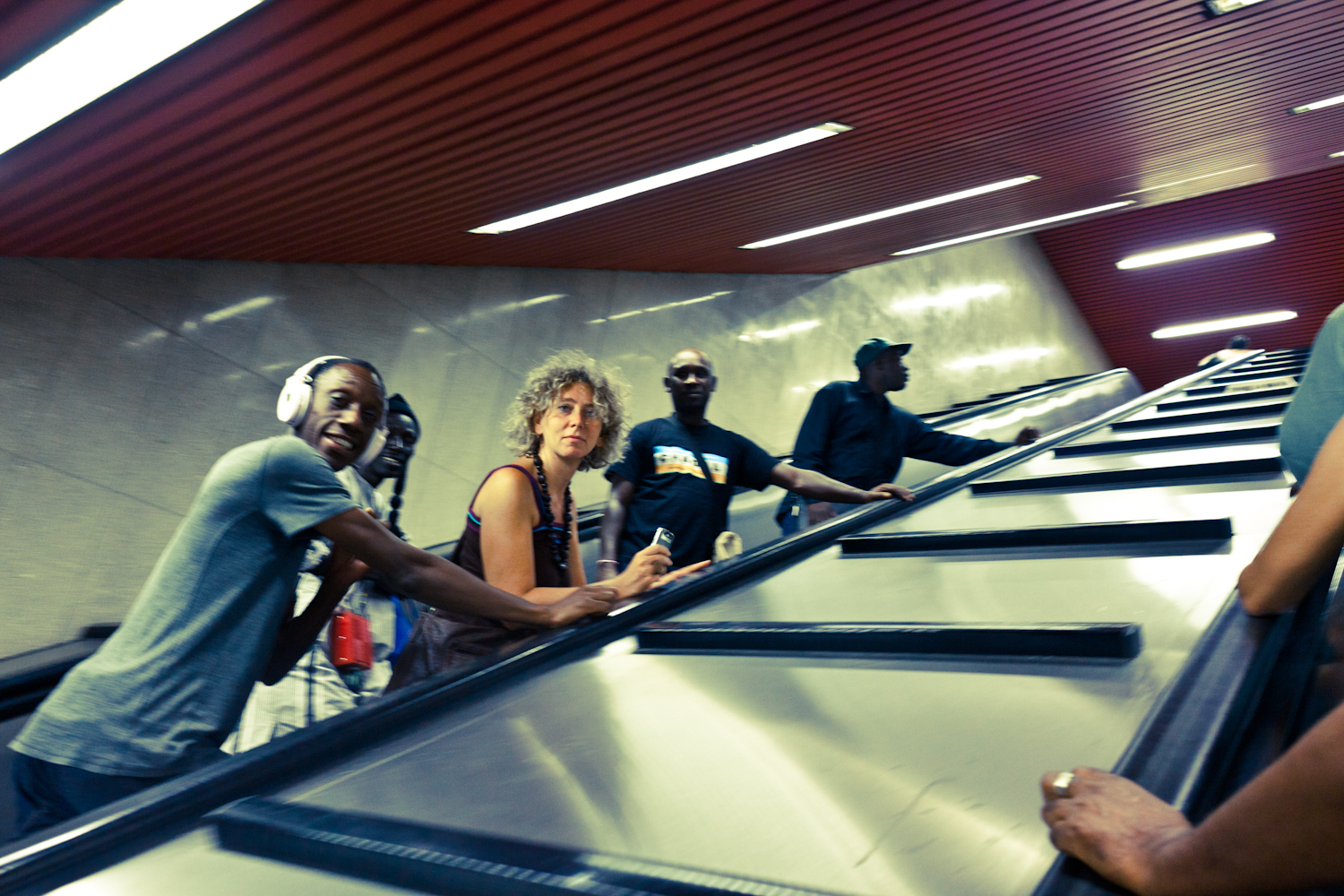





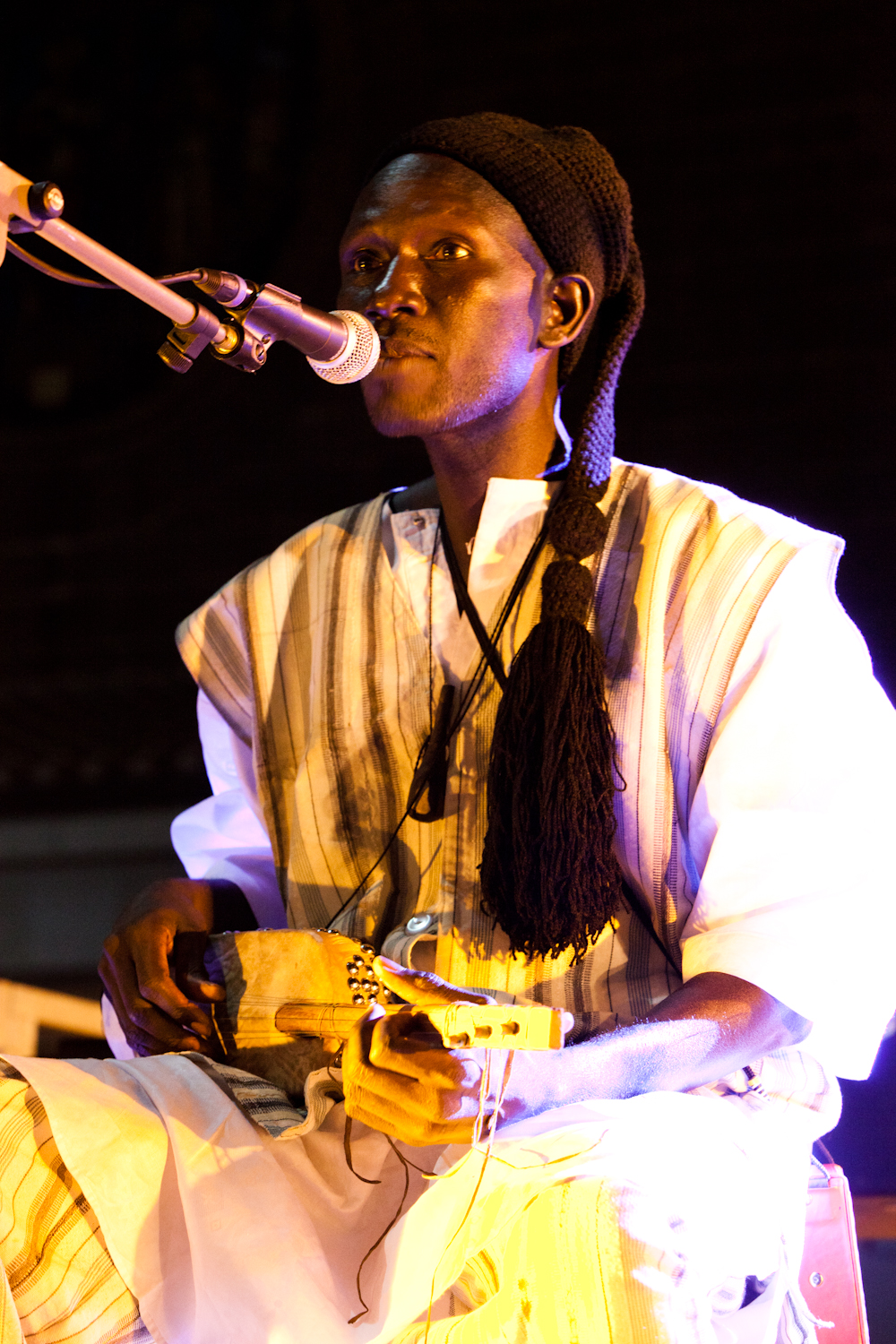

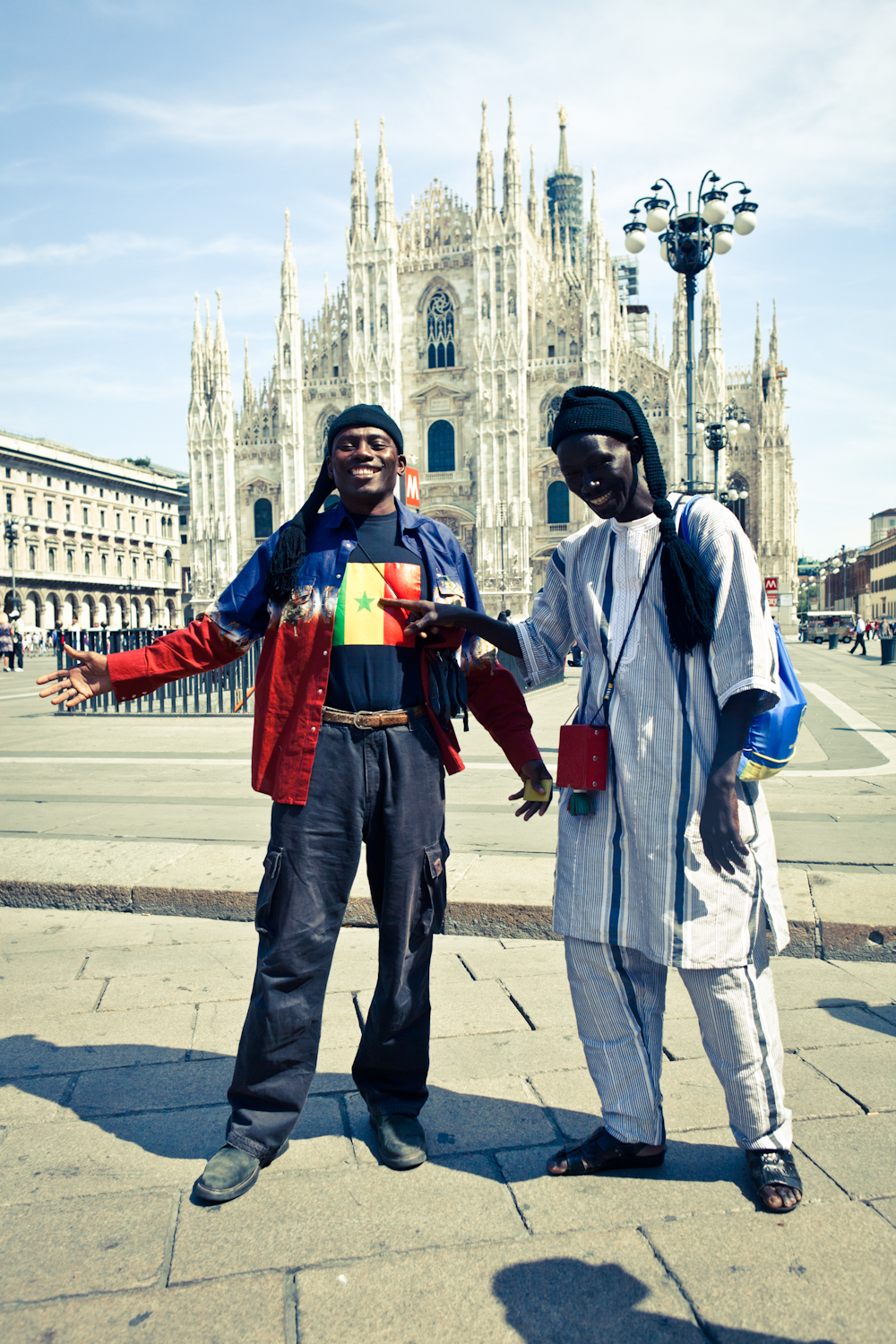












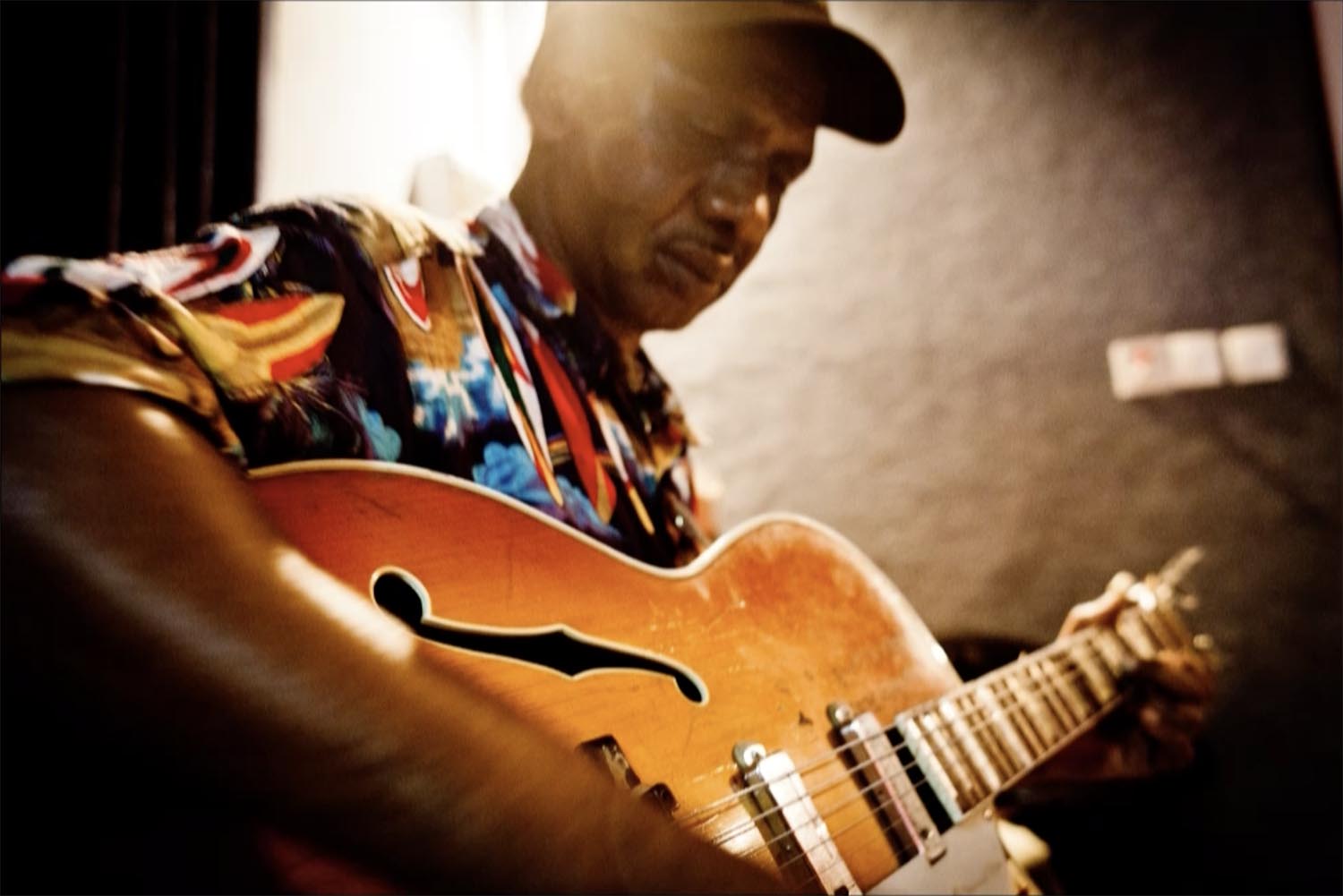
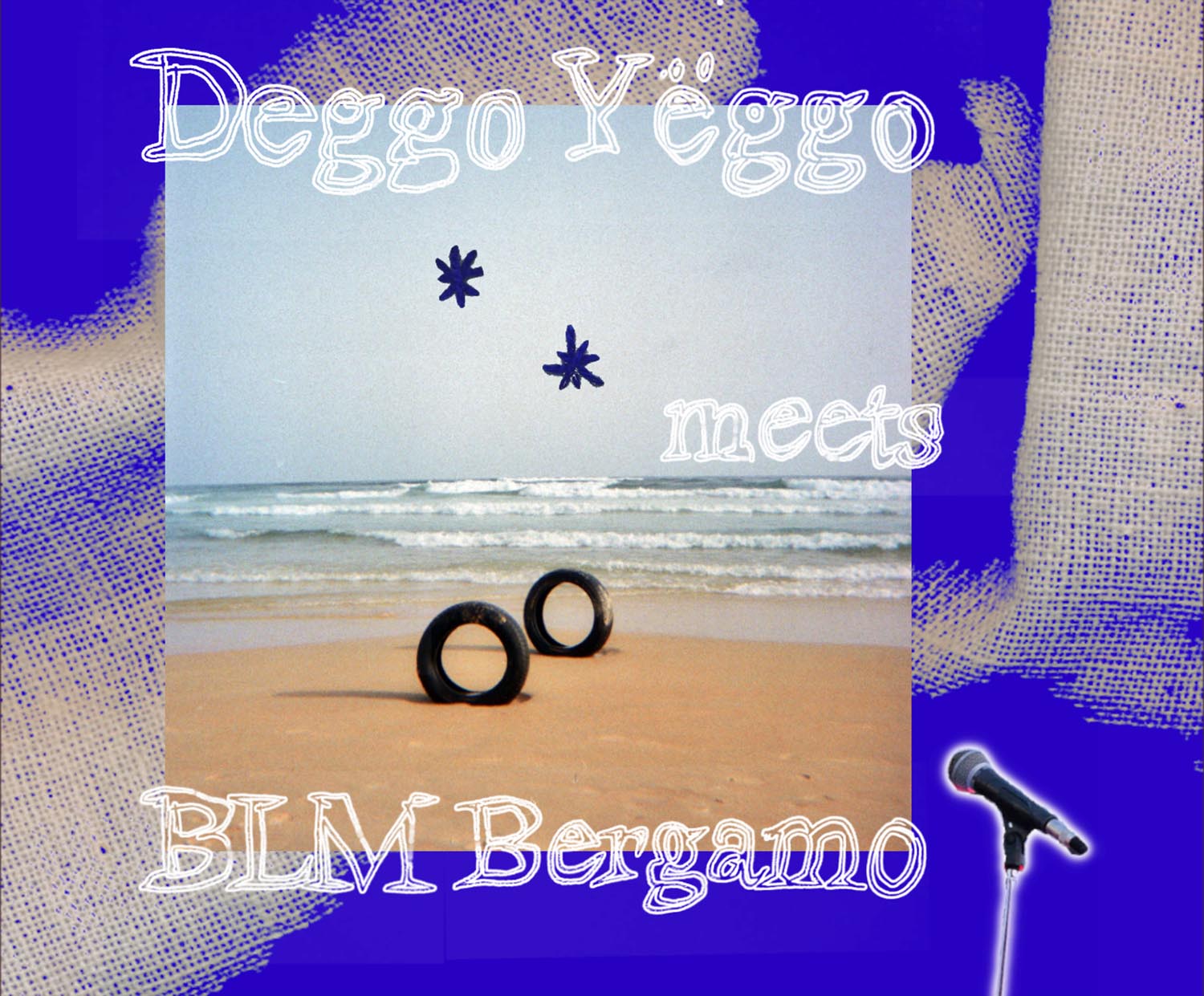
From December 2020, Cherimus association is a special guest of Spectrum web radio, an association founded in Brescia in 2019 by artists and musicians, “a corridor for sonic explorers”, as stated on their website.
Each month Cherimus will produce a podcast entitled Deggo Yëggo meets BLM Bergamo. The title highlights the meeting between Cherimus Deggo Yëggo’s project and Black Lives Matter Bergamo, the group of activists and artists for an anti-racist, inclusive and supportive Bergamo (we invite you to visit the global-network website https: // blacklivesmatter. com /).
As in Deggo Yëggo Cherimus supports the exchange between Sardinian and Senegalese communities present in Sardinia, the collaboration with BLM Bergamo has led to imagine a space that favors the voices of Afro-descendant Italian artists. A space capable of focusing on talents usually on the margins of the world of traditional and dominant media, capable of involving an audience that is too often ignored and excluded.
The name Deggo Yëggo was born during the rehearsals of the Sardinian-Senegalese group in Dakar, translated into English from Wolof it means: harmony, understanding, listening and sharing aimed at a common action. This will be the leitmotif of the podcast.
In the two hours of podcast you will be able to listen to:
~ in collaboration with BLM Bergamo:
– reading, musical selections, interviews
– presentation of artists and activists
– shapes and flans that will unroll while we get our hands and ears dirty
~ from the archives of Cherimus:
– sounds and songs of musical projects such as Chadal, Bisu Ndoto, etc
– interviews with the protagonists of Cherimus’ musical projects
– field-recordings: what was around it?

The first episode features Kristah, soul singer and rapper / trapper of Ghanaian origin living in Bergamo. When interviewed by BLM Bergamo and Derek, she tells her story from her beginnings as a Master DNA, to the suspension in a middle ground that has the rhythm of Afro-trap. Living one’s nature is not just an individual matter but a spark that led Kristah to the co-foundation of The Key Ent., an independent label that brings together several artists and musicians who come from social minorities. We interviewed her on zoom on December 9, 2020, shortly after the release of the first single “Today I don’t go out” by the KID group, formed by Kristah, IBM and Derek.
Graphic: Samīra
Ph: Mouhamed Seck e Julia Hautojärvi
Mix: Pierre Aboa
Produced by BLM Bergamo and Derek MF Di Fabio for Cherimus
1) Master DNA – Afrotrap
2) KID – oggi non esco
3) A-Star – Hyperman
4) Derek Lemar – Radici nello spazio
5) Kristah – No more beggin’
6) F.U.L.A – maldafrica
7) Kristah – Trap the wave
8) Ramma – tutto ok
9) Gorka, Big P, Meth – Te lo giuro
10) Master DNA – cosa c’è
11) IBM – Not my type (feat. Emapee)
12) Slim Gong – Chiamami
13) Equipe 54 – Stilo
14) Fuse ODG – Boa Me ft. Ed Sheeran & Mugeez
15) Bey T, George Kalukusha, Lady Donli, Nemo, Ruth Ronnie, Trina South & Union5 – Kalakuta
16) Burna Boy -Monsters You Made (feat. Chris Martin)
17) Kristah – Mask off
18) David Blank & PNKSAND + il romantico – Foreplay
19) Burna Boy – Real Life feat. Stormzy
20) Beyoncé & Wiz Kid – Brown skin girl
21) Shabaka Hutchings & Kojey radical – no gangster
22) Deggo Yëggo – Thiow Li


One afternoon last December, Sara from BLM Bergamo met Byron Rosero and O.T. Lover: two artists whose families moved to Bergamo when they were children. Byron works primarily with video and as a director, O.T. Lover with dance and both are exploring different media.
In this conversation, the two tell and describe each other: from football cheering for Italy from the neighborhood of Casablanca to dancing in the wheat fields, escaping from the rigidity of the father, from the “millions of cameras” aimed at him in the small mountain villages , to the first savings transformed into film cameras to tell and invent their own narratives. Addressing problems without letting oneself be disheartened by the context and creating communities around one’s passions.

Interview by Sara Mehretab
Mix: Pierre Aboa
Graphic: Samīra e Derek MF Di Fabio
Ph: Mouhamed Seck, O.T. Lover, Byron Rosero
Produced by BLM Bergamo and Derek MF Di Fabio for Cherimus
1) J. Lord – My G
2) Residente – René
3) Tommy Kuti feat. Slim Gong – Come son finito qua
4) Epoque – Petite
5) JAY-Z – The story of O.J
6) Manca, Kaydy Cain, Madd – Baida
7) El Raton – Multicultural
8) ISSAM – Trap Beldi
9) Miriam Ayaba – Credo in te
10) Chris Brown – Day Goodbye
11) Deggo Yëggo – Maman
12) Flawless Real Talk – On my way
13) Jasley- Hooyo
14) Twenti – hey Bro
15) Shygirl – BB
16) Leikeli47 – Attitude
17) Equipe54 – Non Batti l’Equipe
18) KID – Oggi non esco
19) Miriam Ayaba – Sola
20) J. Lord – sixteen
21) Ngawa – Inshalla
22) Deggo Yëggo – Music











Kristah is the first artist in residence of the European Common Places project, developed between Barcelona, Perdaxius and Ljubljana.
Kristah is a singer and rapper of Black music from Bergamo.
She began making music with the church youth choir she attended at the age of 13. Later she met the members of the Ibm group, of which she is still a part, and Derek with whom she started composing her first few bars.
With her group, she created The key ent label, which aims to foster inclusiveness and to promote and support young artists.
She adores soul, R&B, hip-hop, blues, and loves all kinds of music. In her lyrics, she often finds herself talking about how to love yourself, improve yourself, and love others.
She thinks that we would be better off if each of us worked on ourselves, resolving our own inner conflicts: if we learned to feel good about ourselves, we would feel better with other people.
* * *
Exploring Perdaxius and the region of Sulcis with Kristah.
In a few kilometers, we traveled the history and geography of the Mediterranean: we walked between imposing Nuraghi; explored architectural remnants of medieval Pisa in Tratalias and the ancient Phoenician site of Sulky, today Sant ‘Antioco, from which the whole area takes its name; and, finally, we ended in Calasetta, where we met with Blues musician Matteo Leone and art publicist Valeria Frisolone. Calasetta’s inhabitants still speak Tabarkino; Fainè is one of its most popular dishes.







* * *
Meeting with Francesco Capuzzi, improvisational poet, launeddas player, and inventor.
During the chat, intersections emerged between traditional instruments, the similarities and differences between metrics and rhythms of improvisation in both rap and traditional Sardinian poetry, as well as different ways of telling stories, tracing lineage, & melodic dissing.
Francesco played both the launeddas (the traditional wind instrument made from three pipes, which has been traced back to at least the eighth century BC and is still very much in use today in traditional and sacred Sardinian music), and the “Elettroneddas,” their electronic counterpart, invented by Francesco himself. The elettroneddas is slowly gaining in popularity among the launeddas players of the island both for purposes of training as well as experimentation.


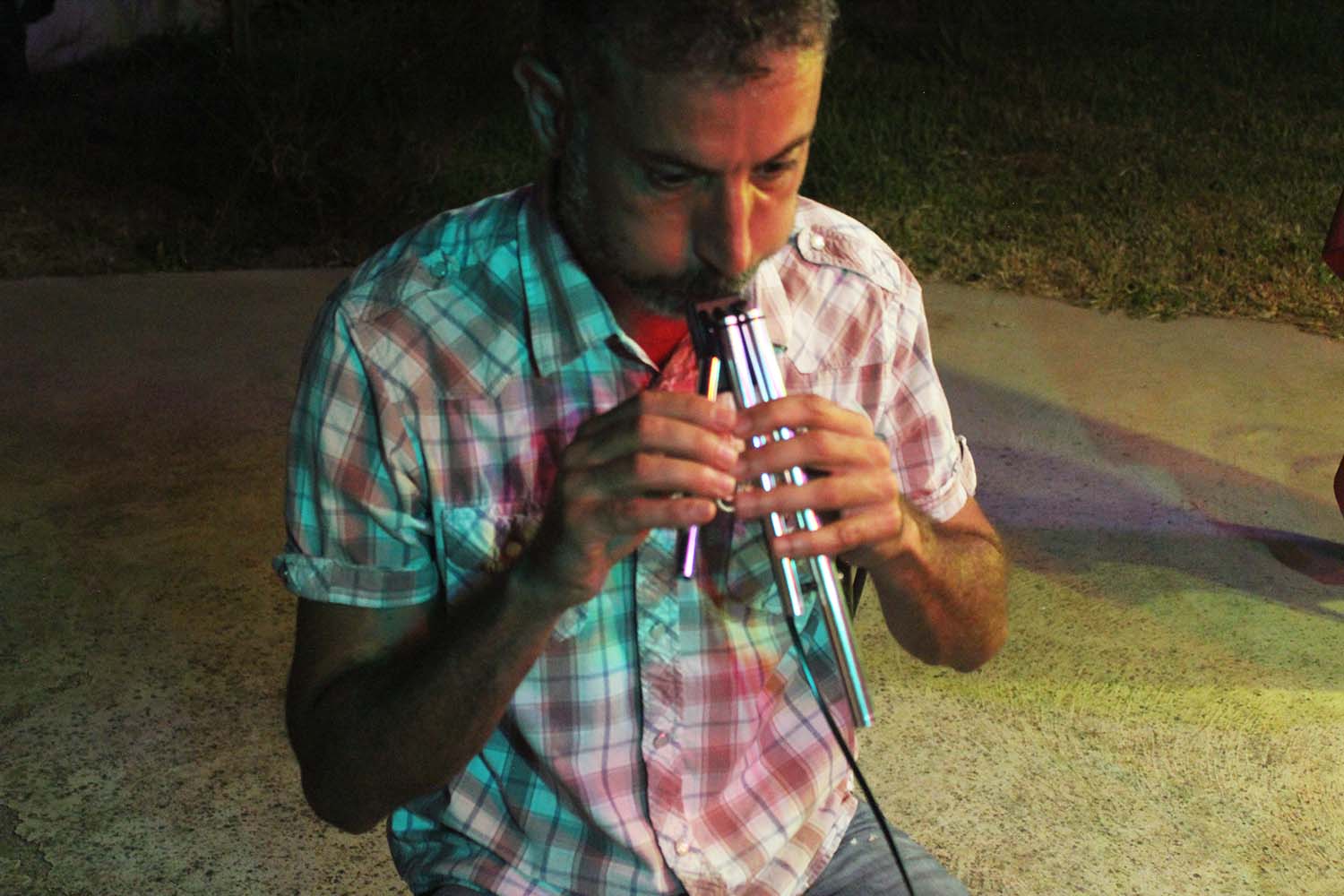

* * *
Kristah during a music workshop with the kids in the “Giardino possibile” of Domusnovas, making up the words and music of a new song with them based on the fruits of the carob tree under which the workshop took place.
In collaboration with Elda Mazzocchi Scarzella Association, Domusnovas.




* * *
Kristah’s mini-concert in the courtyard of Cherimus’s art residency space, a special moment where the artist told us about her music and her life and a warm goodbye to the numerous inhabitants of Perdaxius present for this special event.




* * *
Kristah as the special guest of the art course of “totus in pari” (all together in Sardo). She talked about her music and shared some songs with the children, then invited them to transform the music into colors and shapes, to play with synesthesia and with the secret links we all have between sounds and shapes.



* * *

Totus in Pari is the project activity of Common Places dedicated to the community of Perdaxius and the surrounding area.
Totus in Pari (in english “All Together”) aims to experiment a new model of sociality for the community of Perdaxius, the town in which the association is based. The project is transversal and aims to involve children and young adults, as well as parents, adults and senior citizens.
In order to do this, Totus in pari plans to activate a series of English, Visual Arts and Music courses to establish three small new interconnected communities focusing on individual expression and collective work.
As well as creating a visible change in the public space of the town through the creation of wall paintings made in collaboration with visual artists.
The courses do not have a scholastic or academic slant, but are designed especially as a safe space, free from prejudices and notionisms, inclusive, the project aims above all else to grant each participant the space and time to deepen self-expression and collaboration with others, to imagine new solutions to improve the town’s quality of life.
The courses are interdisciplinary and collaboration between courses will be encouraged. All activities will take place in public places in Perdaxius, such as the community centre, in collaboration with other associations in the town (in particular Pantagus and Su Nuraghe which could host the workshops).
The activities are free of charge except for minimum tuition fees and insurance costs.
The project aims to develop and encourage a sense of community and culture of exchange, reciprocity and critical thinking, also through the involvement of all the associations in Perdaxius willing to collaborate.The topics and objectives of the workshops are the following:
English: learning the English language through games and conversation with native teachers.
Visual Art: participants will be the protagonists of a project of urban regeneration. On the basedon their ideas and dreams, outdoor areas will be identified to be transformed and regenerated through the collaboration with visual artists.
Music: percussion workshops to learn rhythmic patterns and the use of classical, pop / rock and traditional musical instruments.
The project is organized by Cherimus and co-financed by the Municipality of Perdaxius.
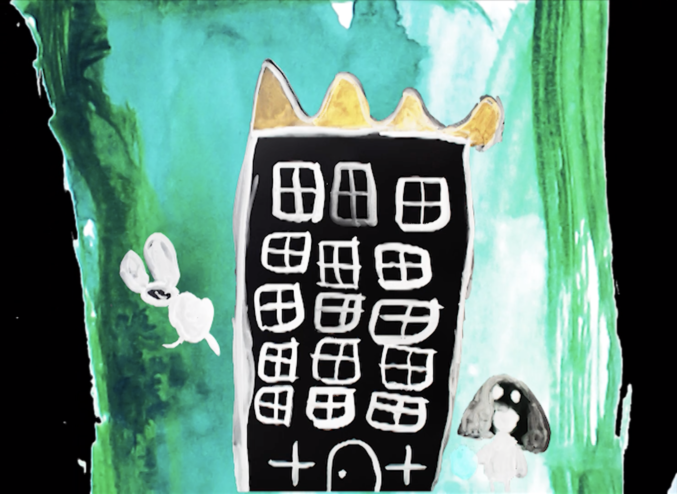
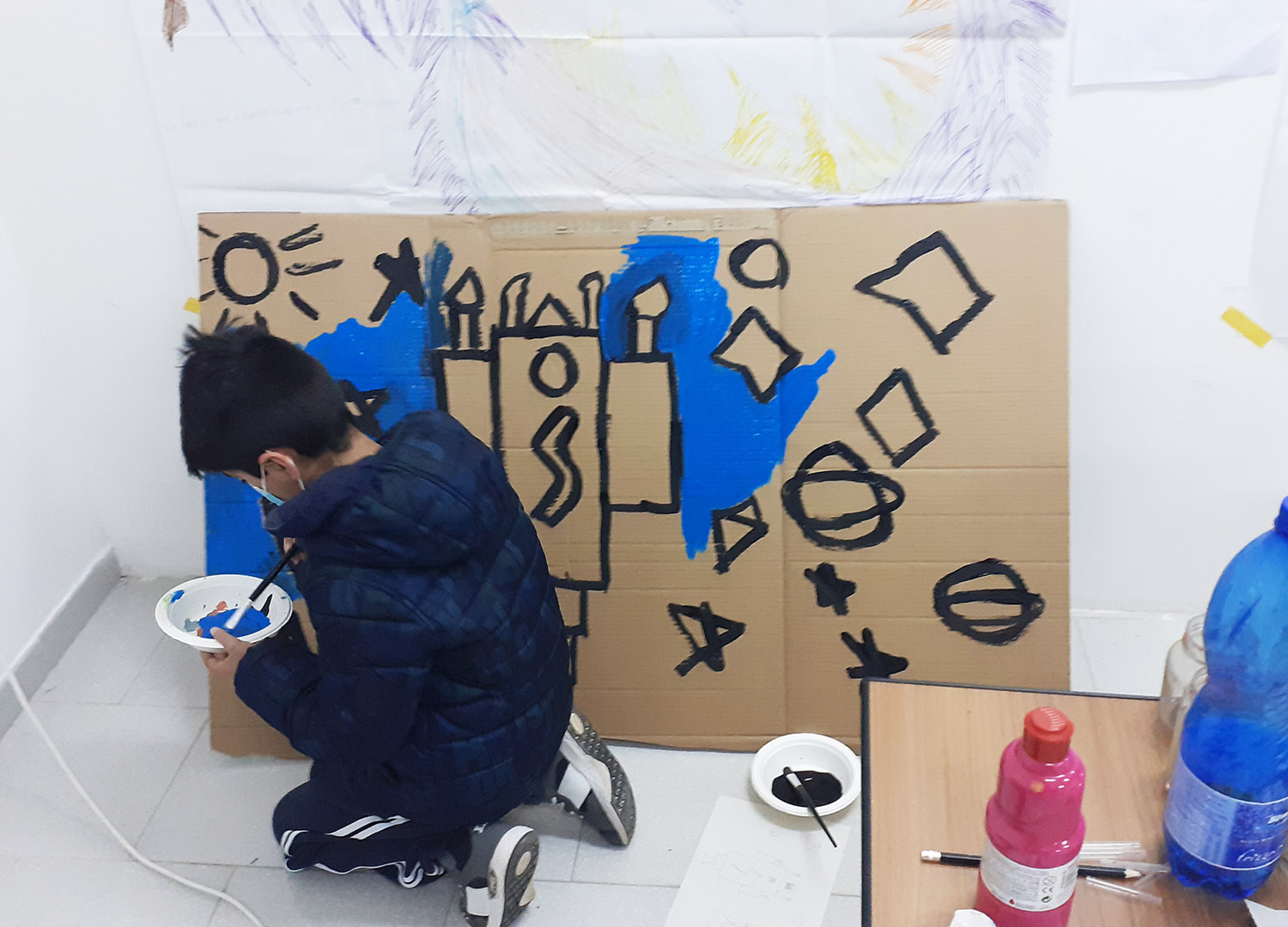

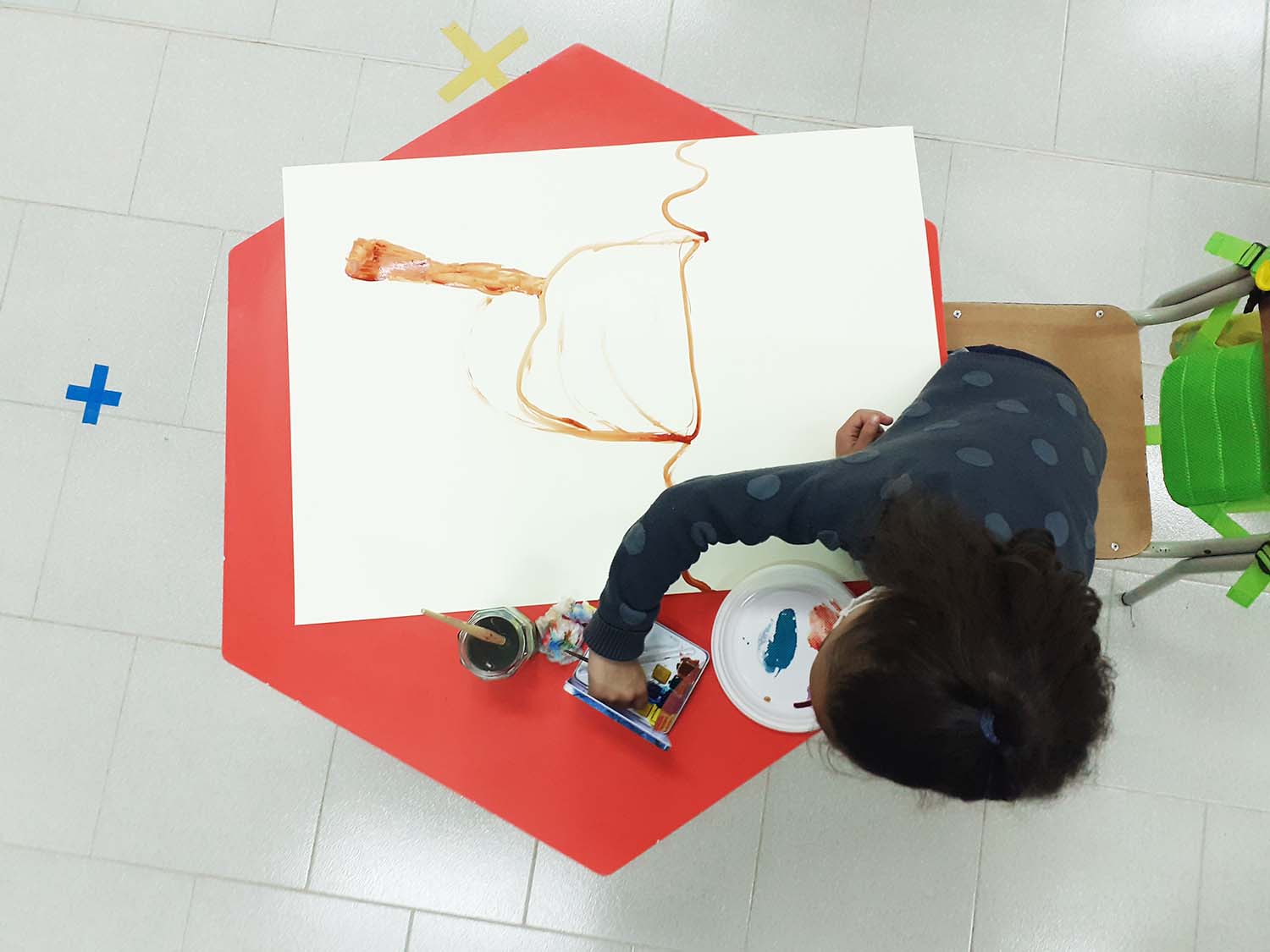













Isuleddas (little islands) is a space for sharing ideas, thoughts, images, and sounds to hold us all together in an archipelago, to tell something about our islands, to invent new names to write around us, new ways of being represented, in a world that is bouncing here and there like a rubber ball
TRINTANOI
By Marco Colombaioni
“Drawings for O.U.T. (office for urban transformation)” 2005, ink jet print. I used to spend most of my free time sketching some simple drawings on a pc using MS Paint. The drawings of this series illustrate Isola Art Center’s everyday life, the never-ending transformation of the space, the utopic vision, the exhibitions, the events, the people, but also the constant sense of precariousness, the cold, the fight against a massive gentrification project. I showed these drawings for the exhibition “tre visioni per la stecca degli artigiani” curated by Bert Theis and Alessandro di Giampietro.
Marco Colombaioni










TRINTAOTU
by Zia Maria, with Yassine Balbzioui e Matteo Rubbi
On 29 November 2015, Yassine Balbzioui and Matteo Rubbi asked Zia Maria for assistance in learning how to make Sardinian sa fregua for the Côte à côte project, curated by Susana Moliner Delgado of La Companyìa and Emiliana Sabiu of Cherimus. Artists and friends passed by Perdaxius over the years have met Zia Maria and tasted her ravioli, her fatti e fritti, her magnificent pardule. Aunt Maria was a piece of Cherimus.
The footage Yassine made then is even more precious to us today.
Zia Maria we will miss you infinitely …
TRINTASETI
by Santo Tolone


TRINTASES
by Marco Colombaioni, Cleo Fariselli, Diego Perrone, Andrea Rossi, Matteo Rubbi, Emiliana Sabiu, Carlo Spiga
An Isuledda of the Christmas past. In 2009 the small Pisan Romanesque church of San Giacomo in Perdaxius was reopened to the public after years of neglect thanks to a nativity scene created together with the town’s schools. Cleo Fariselli created with the children a comet never seen before; Marco Colombaioni and Matteo Rubbi built the characters, humans and animals, and the starry sky; Diego Perrone, on the other hand, thought that all the figures in the nativity scene should have ears made of cookies.
This video is a relic from our archives, a local TV report that magically reappeared. Good vision and happy holidays.
TRINTACINCU
by Teresa Alemán
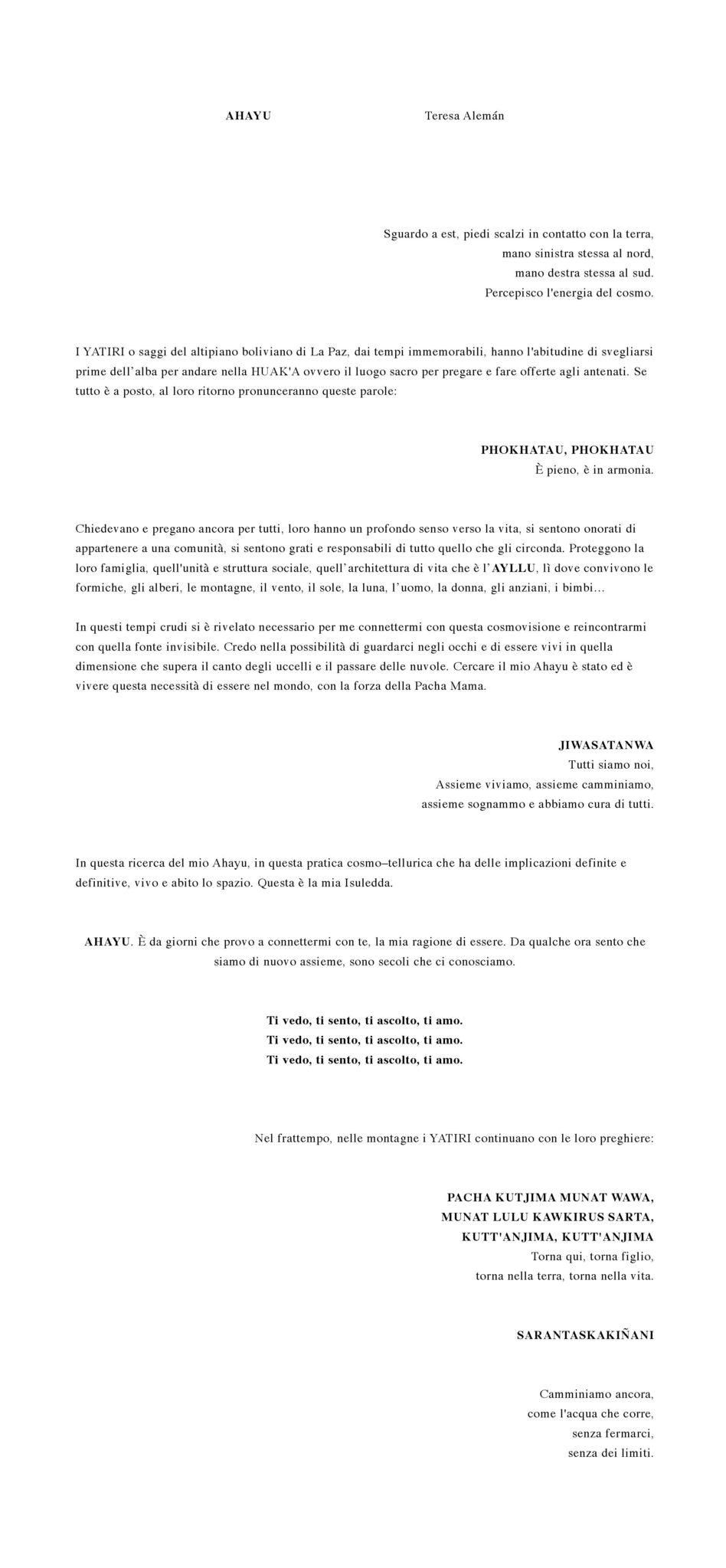
TRINTACUATRO
by Ivan Buenader
TRINTATRES
by Scott Rogers





TRINTADUUS
by Alek O.

TRINTUNU
by Matteo Visentin

It has no ground to which to anchor itself, nor a fixed geographical position. It is a wandering island, which takes up no space but rather covers it, like a shadow.
it could well be imagined as an upside-down galleon, hull to the sky, with sails that unfur from the masts to nearly touch the earth; or like a long-haired dog.
on its belly – or on its sails, depending whether the image of the dog rather than that of the ship is preferred – drops of water from the sea are collected, which allow themselves to deposit clusters of salt upon evaporating. These drops reflect the light that filters in from outside, such that time is not expressed in the succession of day and night but exists as a constant penumbra.
if, in the describing of it, it becomes difficult not to resort to metaphor, it is because, on the island, there is no space for abstract reasonings. Everything is naked and exists for what it is, with no need of being hidden.
The air one breathes is tepid and soft, like an embrace exchanged while wearing a puffer coat, its odor like that of bitter chocolate. An aroma particular to this place and this alone, so intense that it seems to occupy a physical space. and in fact it could be said that it is just this that makes Echta the place it is: when the odor vanishes, the island, too, is left behind.
Translation by Zeyn Joukhadar
TRINTA
by Transhumanza




Transhumanza naschet dae su bisòngiu de ponner a pare sas biddas e is giassos de sartu de Sardìnnia cun sa chirca artìstica de is tempos nostros, boguende a pitzus un’avolotu intre traditzione e sperimentadura, autzende limbàgios e bisuras noos.
Transhumanza est su giassu prus profetosu po nde pesare una retza de relatas intre quine si nch’andat, quine arribat e quine abarrat, una còntiga po fraigare mamentos de atòbiu e de cumpartzidura de costumàntzias artìsticas diferentes.
Que a is pastores qui, mòvidos dae sas stajones qui detzident is bisòngios, traessant is logos in chirca de pabariles noos, TransHumanza est su sprigu de su bisòngiu naturale de tramudare e de ammesturare mundos diferentes.
Su progetu est pentzadu que a unu caminu a tapas fatu de eventos minores, cun ammustros e intervènnidas site-specific in tretos bòidos e qui a su sòlitu sunt allargu dae ue benit fata s’arte.
****************************************************************
Transhumanza comes from the need to connect the rural areas in Sardinia with the Contemporary artistic research, in order to stimulate new imaginative ways of communicating between tradition and experimentation.
Transhumanza is the ideal place to harbor a thick web of relationships among those who come and go and those who stay, offering the opportunity to share diverse artistic practices. Like shepherds, who drift through the different seasonal cycles, looking for new pastures; Transhumanza reflects that natural disposition to migrate towards new possibilities developing alternative contaminations between worlds.
This project forms a path disseminated with various events, exhibitions and site-specific interactions in disused spaces or where art is not usually contemplated.
BINTINOI
by Amigdala
Elementare, è un’isola che risorge ogni sera per accogliere chi proviene dalle isole vicine o dal continente. Ci si arriva con galeoni speciali, fortezze di legno con vele e pennoni che ricordano quelle dei pirati di certe avventure fantastiche.
Elementare è un’alleanza temporanea tra pubblico e artisti, chiamati a condividere insieme il tempo di una notte. In uno spazio attrezzato per il sonno prende forma una comunità provvisoria. Nell’Isola della notte gli attori eseguono un canto rivolto alla notte, come tempo di sospensione e sovvertimento.
L’Isuledda è ispirata alla produzione Elementare (2018) del collettivo Amigdala: http://bit.ly/2NMhKxK
Immagine di Sara Garagnani
Musica: Meike Clarelli
Testi: Gabriele Dalla Barba
Conduzione coro: Davide Fasulo
Voci: Meike Clarelli, Elisabetta Dallargine, Vincenzo Destradis, Davide Fasulo, Fulvia Gasparini, Antonio Tavoni
BINTIOTU
by Luca Garino


BINTISETI
by Miguel Palma

The work “Backstage of an Island” is based on the construction of a sculpture that resembles a tent but which, instead of being shaped like a pyramid or a semi-sphere, has the morphology of the island of São Miguel. Like a camping tent, it is a portable piece, easy to assemble and dismantle. This equipment consists of a wooden base, about two meters width and a cut that relates to the aerial view of the island of São Miguel. This base is lined with a waterproof and plain colored fabric that gives the illusion of the island’s morphology.
“Conta-se, aqui, que um dos medos estruturais na história do Arquipélago era o dos piratas. Outro seria o do isolamento. Ou seja, de movimentos invasivos à impossibilidade de evasão, a insularidade obrigaria a um estado de espírito de alerta e tensão constantes, algo que muito provavelmente define, no fluir de gerações, um carácter muito próprio aos habitantes destes pedaços de terra que, por sua vez, na sua condição vulcânica, já de si constituem pano de fundo suficiente para uma tensão invisível e insidiosa só ultrapassável pela rotinas da existência, das mais sublimes como o amor ou o instinto de preservação, às mais banais, como os repetidos gestos do quotidiano que maquinalmente erigem um tempo sem espessura dramática.”
Miguel von Hafe Pérez


BINTISES
by Holly Fletcher & Diane Edwards
BINTICINCU
by Villa Caterina (Giulia Leone, Makika and Margherita Riva)
La quarantena, tre lumachine nel loro guscio, un corridoio, un microfono nel mezzo, un po’ di taglia e cuci et voilà!
Featuring
Giulia Leone: trumpet, guitar, eletronics from distance
Margherita Riva: pandeiro, jew’s harp
Makika: sampling, launeddas, dissoneddas, bass
BINTICUATRU
by Andrea Rossi and Matteo Rubbi


BINTITRES
di Arrogalla
Scabèciu
Insemola e friggi il pesce, poi fallo marinare in un sughetto con pomodoro, aglio e aceto.
Aggiungi a tuo gusto tutte le spezie e gli odori che vuoi.
Produced and mixed by Francesco Medda Arrogalla at Codaruina StudioDrum by Pier Gavino Sedda (Tumbarinos de Gavoi)
Electroneddas by Carlo Spiga Makika
Guitars by Maurizio Marzo
Jew harp, flute by Massimo Loriga
Oud by Amin Makni
Tama by Pape Ndiaye
Voice by Emanuele “Lele” Pittoni (Ratapignata – Scudi prus a forti)
BINTIDUUS
by Marco Colombaioni




BINTUNU
by Real Madrid



BINTI
by Isamit Morales


The following performance is an ode to pause;
a silent song to life being life.
Tracklist
Side A
Interlude “Yo no quiero esa normalidad de regreso” (I don’t want that normality back!)
Doing Nothing
Doing Nothing – After of Before Something
Side B
Recording Nothing 1
Recording Nothing 2
Recording Nothing 3
DEXANNOI
By Isabella Bordoni


Un segno di buon auspicio, una fioritura di ex-voto. Un viatico, sia per i vivi per uscire con equilibrio dalla quarantena, sia per i morti nell’omaggio di un fiore mancato. E per gli uni e per gli altri, una carezza.
A good omen, blossoming ex-voto. Sustenance, whether for the living to pass through the quarantine in serenity, or an offering for the flowerless dead. And for the one as for the other, an embrace.
DEXIOTU
by Alix Christie

DEXASETI
By Carlo Spiga
Carlo Spiga “Makika”, Sa Tempesta, 2017
Testo: Paolo Mossa
Video registrato nel 2015 nella Repubblica di Tuva (Russia)
Firma, firma! A ue fues?
Clori bella, inoghe resta…
Mira chi grave tempesta
sun minattende sas nues.
Inoghe solu has iscampu:
firmadi, Clori inumana…
Sa ’idda est troppu lontana,
de percias nudu est su campu.
Firma! Ohimè, ite lampu…
No intendes ite tronu?
Fermati, fermati! Dove scappi?
Bella Clori, resta qui…
guarda che brutta tempesta
stanno minacciando le nuvole.
Solo qui trovi scampo:
fermati, ninfa Clori…
Il paese è troppo lontano,
di rifugi è nudo il campo
Fermati! Ohimè, che lampo…
Non senti che tuono?
Stop, stop! Where are you running to?
Beautiful Clori, stay here
Look what a bad storm
The clouds are threatening
Only here you can escape:
Stop, unearthly Cloris
The town is too far,
The field is bare of shelters
Stop! Alas, what a flash …
Can’t you hear that thunder?
SEIXI
di Antoni Sotzu

S’isuledda de Altaria, è abitata da oggetti domestici,
memorie, attese e prosperità.
Un tappeto tondo li accoglie:
ci sono custodi di liquidi e materia,
c’è un tempo del deserto a tre vasi,
un suono campestre ossidato,
una spianata lapidea,
la statua di una saggia testuggine,
una lama a sostegno.
Si ritrovano tutti qui, in questo altare.
In quest’isola.
CUINDIXI
by Justin Messina and Zeyn Joukhadar

Me voglio fa’ ‘na casa ‘mmiez’ ’o mare
di Gaetano Donizetti
Clavicembalo: Justin Messina
Voce: Zeyn Joukhadar
Brano registrato alla Fondazione Camargo
il 7 maggio 2020
Me voglio fa’ ‘na casa ‘mmiez’ ’o mare
Me voglio fa’ ‘na casa ‘mmiez’ ’o mare
Fravecata de penne de pavune
Fravecata de penne de pavune
D’oro e d’argiento li scaline fare
D’oro e d’argiento li scaline fare
E de pietre preziuse li barcune
E de pietre preziuse li barcone
Quanno nannella mia se ne va a affacciare
Quanno nannella mia se ne va a affacciare
Ognuno dice ognuno dice
Mo’ sponta lu sole
Me voglio fa’ ‘na casa ‘mmiez’ ’o mare
by Gaetano Donizetti
Harpsichord: Justin Messina
Voice: Zeyn Joukhadar
Recorded at Camargo Foundation May 7th 2020
I want to build a house in the middle of the sea
I want to build a house in the middle of the sea
Made of peacock feathers
Made of peacock feathers
(I want ) to make the steps of gold and silver
(I want ) to make the steps of gold and silver
And the balcony of precious stones
And the balcony of precious stones
When my baby shows her face at the window
When my baby shows her face at the window
Everyone says, everyone says:
Now the sun is rising!
CATORDIXI
by Ekin Can Göksoy

TREIXI
by Xandra Ibarra

DOIXI
by Alessandro Cau
UNDIXI
by Emiliana Sabiu
Starring: https://www.instagram.com/isolacannolo/
in collaborazione con: Derek MF Di Fabio
È stato Cannolo che mi ha tirato fuori di casa, e mentre lui inseguiva tracce odorose, io inseguivo macchie di colore, e di ossigeno. In questa bolla densa e spessa, abbiamo visto quante cose interessanti succedono quando si è soli.
DEXI
by Amy Sow
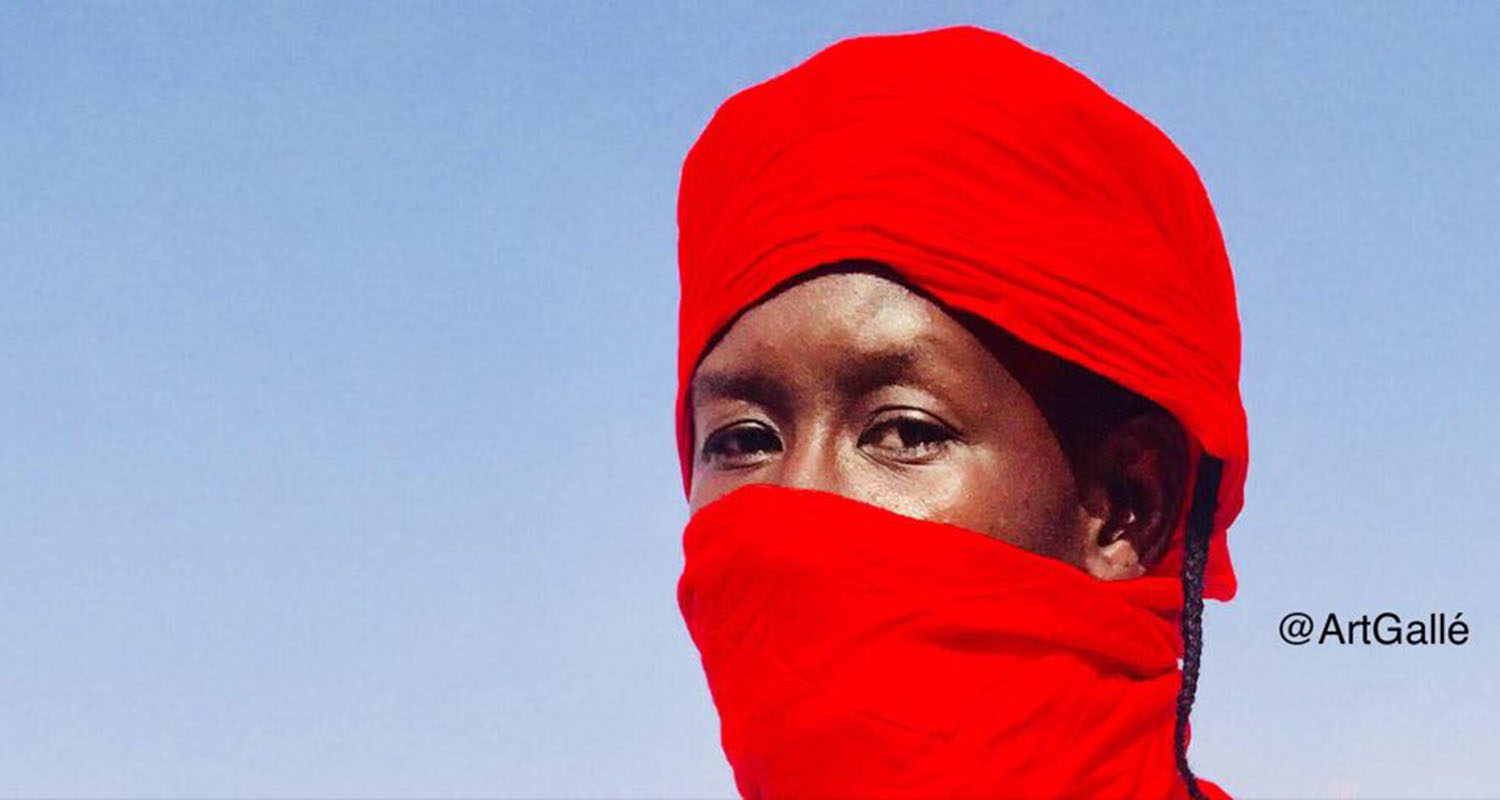
« (…) c’est un concept que j’ai développé depuis le début du confinement pour dire que les masques ne doivent pas seulement servir au coronavirus mais également à combattre les violences faites aux femmes.
C’est pour cela j’ai créé les masques rouges que je porte moi même»


NOI
by Zeyn Joukhadar

di Zeyn Joukhadar

OTU
by Alice Vercesi

E così il virus è approdato persino sull’Isola di Pasqua. Un lembo di terra sperduto a chilometri di distanza da ogni costa.
La mia mamma giramondo ci è andata in vacanza l’anno scorso. Per quell’occasione le regalai un libro. In questi giorni l’ho preso in prestito.
«Raccolse nelle fessure di Motu-iti le penne dei gabbiani e le intrecciò, le incollò con la polpa del ta-ompi, vischioso e tenace, e si fece un grande copricapo leggero che metteva nelle ore più assolate del giorno e gli teneva fresca la testa come una piccolissima nuvola.» (Roberto Piumini, Motu-iti L’isola dei gabbiani)
And so the virus even landed on Easter Island. A remote strip of land miles away from any coast.
My mom went on vacation there last year. For the occasionI gave her a book. These days I borrowed it.
“He collected the feathers of the seagulls in the crevices of Motu-iti, he braided and glued them with the pulp of the ta-ompi, slimy and tenacious, and he made himself a large light headgear to put on during the sunniest hours of the day, keeping his head cool like a very small cloud”. (Roberto Piumini, Motu-iti L’isola dei gabbiani)

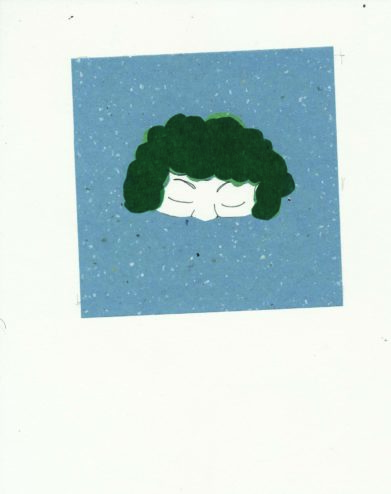
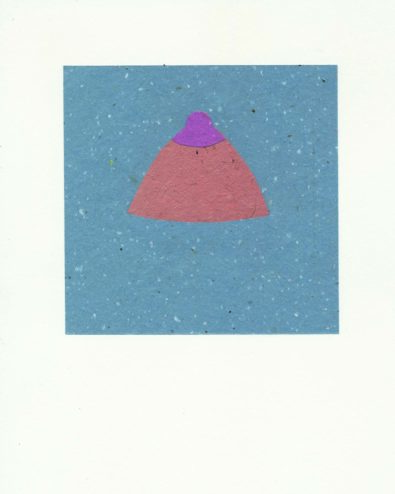

Immagini da Calendario 2019
SETI
Il Tempo dell’Oscurità
Il Tempo dell’Oscurità è una band formata da cinque amici, Edoardo (voce e chitarra), Ginevra (tastiere), Matilde (chitarra), Alice (basso) e Carlotta (batteria).
I I.T.d.O. si caratterizzano per un sound molto rock che guarda anche alla melodia, con riferimenti che vanno dai Deep Purple ai Kiss, senza disdegnare sferzate rumoristiche alla Sonic Youth (benché non li conoscano). Sul palco la band da il meglio di sé con un apparato performativo fatto di linguacce, corna e artigli che si elevano al cielo.
“Scuola di Rock” è un omaggio al Rock, come potenza espressiva e collettore di amicizia. Il brano vede due guest, oltre alla formazione classica si alternano ben due batteristi, Carlo e Desirée.
Il brano è stato registrato e mixato da Makika.
Il Tempo dell’Oscurità è una band nata all’interno dei laboratori di musica dell’ Exmè di Pirri.
Il Tempo dell’Oscurità (“The time of Darkness”) is a rock band formed by five friends: Edoardo -vocals and guitar, Ginevra -keyboards, Matilde -guitar, Alice -bass- and Carlotta – drums. I.T.d.O. influences include Deep Purple to Kiss, and Sonic Youth (even if they have no idea who they are). On stage the band is at their best, using a performance apparatus made of tongues, horns and claws that rises to the sky.
“School of Rock” is a tribute to Rock, as an expressive power and a catalyst of friendships. The song featured two guest artists, in addition to the usual line-up there are two drummers, Carlo and Desirée.
The song was recorded and mixed by Makika. Il Tempo dell’Oscurità is a band born inside the music workshops of Pirri’s Exmè.
SES
by Leonardo Chiappini

CINCU






CUATRU
by Alexandra Collins
TRES
by Ibrahim Nehme


my jazeere sits on solid grounds. there are books written by women about women, there is poetry, there are love letters, there are French lessons, there is a book I want to let go of, there are old notes and new ideas, there are independent magazines and long forgotten zines. on my jazeere, i stand on giant shoulders. here, all is well.
La mia jazeere poggia su solide basi. Ci sono libri scritti da donne sulle donne, c’è poesia, ci sono lettere d’amore, ci sono lezioni di francese, c’è un libro che voglio lasciare andare, ci sono vecchie note e nuove idee, ci sono riviste indipendenti e zines a lungo dimenticate. Nella mia jazeere, sto sulle spalle di un gigante. Qui, va tutto bene.
DUUS
from the project So Close, by Mass’art (Tunis) and Cherimus (Perdaxius)
Musicians: Aymen Makni, violino e voce; Amin Makni: oud and voice; Maurizio Marzo: guitar; Francesco Medda “Arrogalla”: computer and dubbing
UNU
by Yassine Balbzioui



Click the image and download the pamphlet “Working Between Islands”
